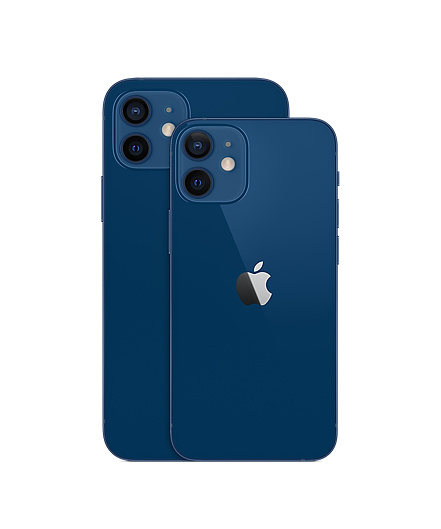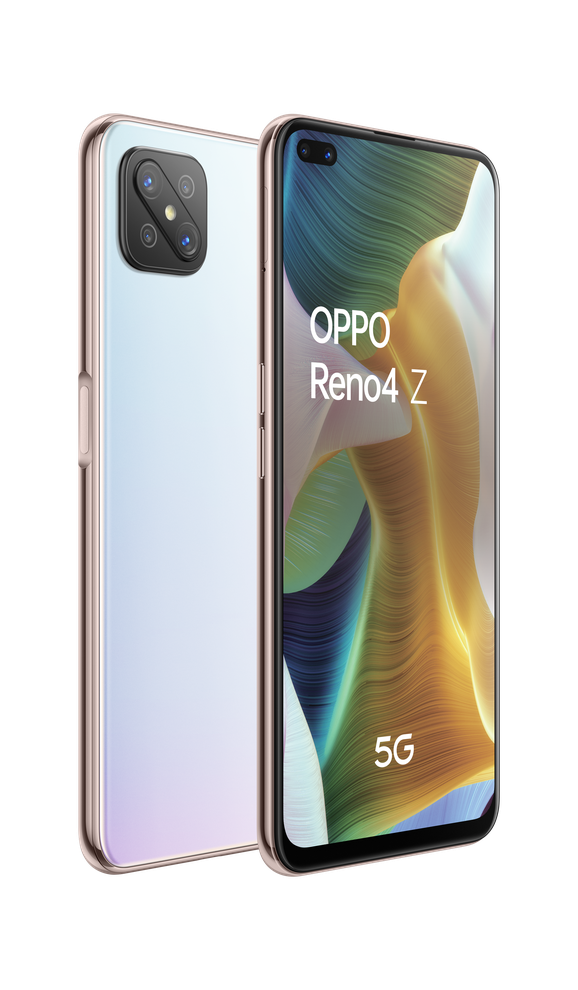Everything you need to know before you buy a 5G phone in Australia
- 02 November, 2020 14:10

It’s just insane to think that in less than 30 years, we’ve evolved from the humble SMS to watching whatever we want, whenever we want, thanks to mobile data. And now, mobile data speed is kicking it up a notch, with the introduction of both 5G networks and the first 5G-capable smartphones to the Australia market.
For a general overview of 5G as a technology, click here.
5G Carriers: Telstra Vs Optus Vs Vodafone
Telstra
 Credit: Telstra
Credit: Telstra Telstra were the first cab off the rank, upgrading some base stations in Sydney and Melbourne to be 5G-ready in late 2018 and then launching their formal consumer offering in May 2019. At that time, the telco announced that 5G access would be free for the first twelve months before becoming a paid add-on for Telstra customers. In May 2020, that happened. Sort of. Postpaid customers on Telstra’s cheapest ‘Small’ data plan have to pay an extra $10/month for 5G access but Telstra customers on Medium, Large and Extra large plans get it for free.
[Related: Everything you need to know about 5G]
As for coverage, Telstra’s 5G rollout is the largest in terms of sheer size. This is partially due to the head-start they had on the competition but it should be noted that this advantage doesn’t entirely offset the reality that it is still something of a patchwork rollout. Even if you live in a major city like Sydney or Melbourne, you won’t find 5G everywhere.
Even if the physical footprint of Telstra's 5G network has increased significantly over the last eighteen months or so, overall coverage is still relatively patchy compared to what the existing 4G network covers. You can find out if Telstra’s 5G network is available in your area here.
Check out the map below for a snapshot of what Telstra’s 5G network looks like:
Optus
 Credit: Optus
Credit: Optus Optus rolled out their 5G offering in November 2019. As opposed to Telstra’s mobile-centric approach, Optus’ pitch for 5G put fixed home wireless front and center. Another key difference worth noting is that Optus insists that all plans, regardless of who they're built for, will come with 5G-included.
At that time, the carrier claimed they’ve “got over 290 5G sites across Sydney, Canberra, Adelaide, Melbourne, Brisbane, Melbourne, Perth and “other key locations” across NSW, Victoria and Queensland. Expect that number to rise in the new year, with 1200 sites planned to be in place by March 2020.” You can find out what Optus 5G coverage looks like in your area by clicking here.
Check out the map below for a snapshot of what Optus’ 5G looks like:
Vodafone
 Credit: Vodafone
Credit: Vodafone Vodafone launched their 5G network in March 2020 and, in line with that timeline, their network rollout isn’t as comprehensive as that of Optus and Telstra. That being said, Vodafone's 5G service comes at no additional cost to customers.
Vodafone says that over 650 sites have been planned and progressively rolled out since mid-2020 but their website only shows off a proposed site map rather than one that reflects the current state of their 5G network at this time. We’ve included it below but, for comparison purposes, it’s worth remembering that it reflects reality as Vodafone would like it to be rather than how it actually is.
 Credit: Vodafone
Credit: Vodafone 5G Smartphones: What are my options?
While the early days of 5G connectivity in Australia were characterized by scarce connectivity, battery drainage and limited options, those looking to get in on the action now have a lot more options to choose from. Here’s a look at what each brand has to offer when it come to 5G smartphones:
Samsung
With the launch of last year’s Samsung Galaxy S10 5G, Samsung became the first major smartphone manufacturer in Australia to embrace 5G connectivity. In the time since, Samsung has continued to pump out 5G devices. While next-generation connectivity is still being positioned as an optional extra rather than something included as standard, Samsung’s 5G roster is much more broad in terms of the market segments and price-ranges it hits.
[Related: Five reasons why you might want to buy Samsung's Galaxy S10 5G]
Samsung’s current 5G roster is larger than the entire field for 5G phones in 2019, it includes the following devices:
 Credit: Samsung
Credit: Samsung Samsung Galaxy Z Fold2 5G
Samsung Galaxy Note10+ 5G
Samsung Galaxy Note 20 5G
Samsung Galaxy S20 FE 5G
Apple
 Credit: Apple
Credit: Apple Apple only recently embraced 5G connectivity but their move to include it across their entire 2020 lineup looks set to firmly cement the feature as a standard going forward. For obvious reasons, the new iPhone 12 and iPhone 12 Pro are the way to go if you're bought into the iOS ecosystem and want a 5G phone.
However, unlike much of the Android-based competition, Apple’s 5G-enabled devices are not distinguished out by naming conventions. If you’re looking to buy a new iPhone in 2020 and expecting 5G connectivity, it’s worth double-checking to make sure the model of iPhone you’re looking at actually has it.
At the time of writing, these Apple devices have 5G connectivity:
These Apple devices do not have 5G connectivity:
iPhone 11
iPhone XR
Oppo
 Credit: Oppo
Credit: Oppo Where Samsung’s pitch for 5G places the feature at the cutting edge, Oppo are a little more willing to play around with the price. Last year’s Oppo Reno 5G was our pick for the best value 5G handset available in Australia and this year’s crop arguably improve on that aspect of things:
Oppo currently offers a total of five 5G devices:
Motorola
 Credit: Motorola
Credit: Motorola Motorola only recently graduated into the 5G smartphone arena with the foldable Motorola Razr 5G and the slightly more-modest Moto G 5G Plus and Motorola Edge 5G. The former is basically a rebuild of the original Razr foldable with 5G rather than 4G connectivity. Meanwhile the latter features a 90Hz 6.7-inch curved edge AMOLED display, a Snapdragon 765G processor and a triple-lens camera with ToF sensor.
You can check out postpaid plans for the Moto G 5G Plus using the widget below:
Vivo
 Credit: Vivo
Credit: Vivo Vivo are a relatively recent addition to the Australian smartphone market but they’ve wasted no time in putting together their first 5G phone: the Vivo X50 Pro 5G. It’s not available through any of Australia’s major carriers yet but can be bought outright through the following places:
 Credit: Google
Credit: Google Both Google's budget-friendly Pixel 4a 5G and the flagship Pixel 5 have 5G connectivity.
In our review of the Pixel 5, we said that "Where the Pixel 5’s traditional rivals are sticking to the tried and true course of delivering premium smartphones that raise the stakes through excessive specs or futuristic innovations like foldable screens, Google are changing their tune to a more catchy melody: the idea that the future should be better value, as opposed to just plain better."
LG
 Credit: LG
Credit: LG To their credit, LG were one of the first brands to launch a 5G smartphone in Australia. Unfortunately, the LG V50 ThinQ 5G wasn’t our favorite when it came to 2020 flagships. In our review, we said that “LG’s first 5G handset tells a familiar story but it’s more of an obnoxious big-budget remake than a cult-classic. It's less Suspiria and closer to the recent live action take on Dumbo. When it comes to the price, this thing sits towards the top of the smartphone totem pole but the gulf between LG and the other brands playing in that range feels like it has never been larger.”
Thankfully, the LG Velvet 5G fares much better. In our review, we said that “While the middling camera and bloated software don’t do it many favors, the LG Velvet is still a decent option for those who want something a little closer to a typical flagship than even the bolstered mid-tier can provide.”
You can check out postpaid plans for the device using the widget below:
Should you buy a 5G phone in 2020?
In 2019, we were excited but apprehensive about 5G. We wrote that:
If you’re interested in buying a 5G phone specifically to use 5G, it still might be best to wait for the network to be more broadly available. No, seriously. Have a look at Telstra’s current (as of January 2020) 5G coverage in Sydney. The middle of the harbour has more coverage than most of the city.
Unless you absolutely need a new phone right this minute because you dropped yours in the toilet, you’re better off waiting a while - at least until 5G becomes more widely adopted and 5G phones drop off in price. Right now, they’re supremely expensive and there aren't that many places where you get the full value from their 5G capabilities.
There also aren't any real consumer use-cases or popular apps that require 5G yet. The download speeds might be dramatically faster but there aren't any things you can do on a 5G phone that you can't with a 4G device. So calm your FOMO - you’re not missing out. Unless you’re in the 1% of Australians that will have access to 5G straight away, there’s not much point in upgrading right now.
In 2020, we’re more confident about 5G.
 Credit: Fergus Halliday
Credit: Fergus Halliday While Australians have spent most of the year indoors, Telstra, Optus and Vodafone have been hard at work. Australia’s current 5G networks are much more expansive and consistent than they were twelve months ago. On the device side of things, 5G connectivity has also shifted from a premium optional extra to something you should expect in your next handset.
It’s not quite standard yet and the benefits of 5G aren’t as life-changing as the marketing might lead you to believe but if you’re in the market for a new phone, it should have 5G.
Next Page: Buying A Cheap 5G Phone
 Credit: Apple
Credit: Apple This article was originally written by Sarah Lewis and updated by Fergus Halliday in November 2020.
Page Break
Buying A Cheap 5G Phone
Let me guess: you're on a Telstra or Optus that included 5G access and your current phone is a few years old. There's no way you're going to drop more than $1000 on a new device just for 5G. What are your options?
Well, to begin with, the Google Pixel 4a 5G and the Oppo Reno4 Z 5G are our go-to recommendations for budget-friendly 5G smartphones. They're new enough that you bypass some of the battery-related issues found in early 5G devices but still cheap enough that you can probably fit them into a modest budget.
If that's still not cheap enough or a little too mid-tier for your liking, there also are a few flagship 5G devices released last year that have depreciated pretty significantly over the course of 2020. Here's a short list of our recommendations:





